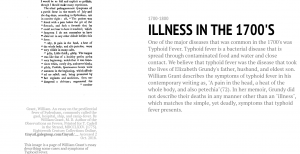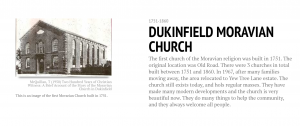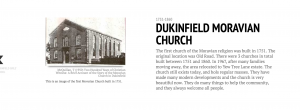The chronology of events matter in history because it helps us understand things we may not be able to piece together just be reading some material. Timelines, for example, ‘compare individual histories to one another’(15) which allows us to notice possible patterns that may have played out in history. In order to create our timeline for Elizabeth Grundy’s memoir, we first had to do some distant reading. We created a Google Document that contained all important names, dates, places, and possible events that occured within our memoir. From there, we had to research historical events that connected to three of our important finds in the memoir. This is where we switched from distant reading to the creation of a timeline. The timeline helped us clarify what each event was because we went in depth on a few topics. What I chose to incorporate into our timeline was the “illness” that took the life of Grundy’s father, husband, and eldest son. Not until we found our three events did our timeline actually start to look like a timeline. While timelines outline important dates and events of some time period, they also obscure a lot of events that may not be “important enough” to be on a timeline. Whereas distant reading merely notes the important dates and events, a timeline is ‘ubiquitous in everyday representations of time’(14). However, chronology is not only applied to timelines. A large contributor to the visual metaphor was the map. At the time the map had become, ‘a key symbol of the power of knowledge itself’(17).
Mitch Gavars is a student at Bucknell University where he is a part of the swim team. Mitch is from Barrington, IL and has one sister. His favorite movie is Aladdin.







